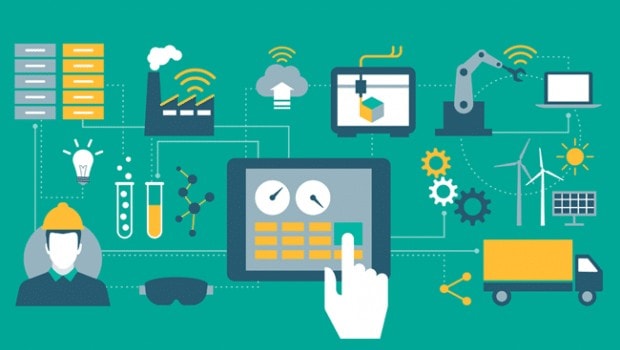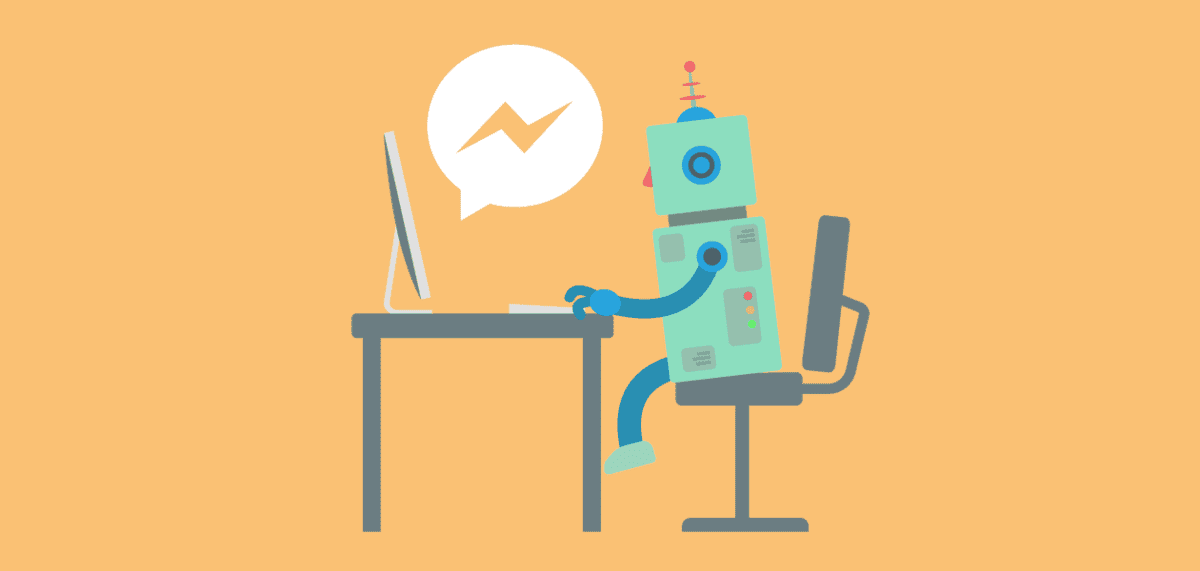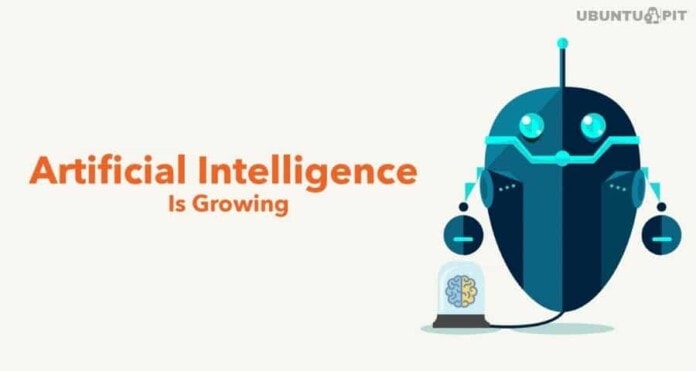Artificial Intelligence and machine learning have evolved over the years. A good example of AI trends is the rise of chatbots taking over businesses to manage incoming customer queries. Machine learning has helped analyze large data sets within minutes, but the quality of the analysis is as good as the data. To truly reap the benefits of machine learning and AI, organizations need to manage their data accuracy. The AI trend of providing customized experiences using algorithms is common in most user platforms as they recommend new content to users. Alan Turing once asked the famous question, “Can machines think?” and now emerging machine learning and AI trends will tell us if machines can have emotions or be creative?
Machine Learning and AI Trends
Let’s take a closer look at how techies have contributed to the latest AI and machine learning developments.
1. Automation

Intelligent Process Automation, aka IPA, is the process of ensuring automation of manual tasks with artificial intelligence. All businesses have bottlenecks in various business processes. IPA will help them identify the trend and predict future bottlenecks by enabling them to enhance decision-making effectively. Amazon Go Store first introduced us to the experience of checking out from a store without cashiers. Who would have thought that’s possible?
Automation is a beneficial advancement for any business to drive its operations. For instance, automation can help prevent fraudulent cyber attacks by identifying unusual user requests and their frequency. Should there be such an event, the system can signal the administrator, enabling them to take the necessary actions.
Another notable automation is the advanced automated testing tools for developers. Coders can now focus their efforts on reading and writing codes instead of spending hours testing implementations of smart systems and working on debugging. These automated business processes have been highly anticipated to become the basic standards for automation in the future. It progressively helps businesses grasp their end to end processes better and help them manage them efficiently.
2. Conversational AI Bots

One of the most innovative ways to handle customer queries is the dawning of Chatbots. Conversational AI bots bring in the power of AI via Natural Language Processing (NLP) and Natural Language Understanding (NLU). Bots enable the functionality of buttons and a couple of hundred intents to facilitate customer queries. In contrast, conversational AI Bots have the scope of unlimited scalability with the help of machine learning. Natural language processing gives customers the human experience.
It is now possible for users to file insurance claims, book healthcare appointments, apply for jobs, block their financial cards, and do much more with the advent of conversational AI bots. This will help businesses automate their customer support and help them automate sales and knowledge support.
For instance, car rentals can automate their rental processes with conversational AI bots to give their customers a better experience and save time for their employees and increase efficiency. Companies can also help their employees not answer redundant queries from prospective employees or customers by automating the process. Conversational AI bots will take care of all the incoming queries through Automatic Semantic Understanding.
3. Heterogeneous Technology
Heterogeneous System Architecture (HSA) allows other computer programs to integrate and operate together seamlessly. It will be standard practice, in the future, to have software stacks to be easily integrated with Application Programming Interfaces (APIs) and other open Software Development Kits (SDKs). The integration of cloud software with others is necessary to improve business operations.
The latest machine learning and AI frameworks created by technological firms will rely on HSA by making them multi-modal. According to the new AI trend, future AI applications can be customized using multi-modal frameworks with pre-trained models to cater to unique demands. For instance, multi-modal skills such as multi-speaker transcription can be incorporated into any conversational AI bot framework.
Pre-trained models could include lip activity detection, gaze detection, object detection, NLU, gesture recognition, and sentiment detection. Another good emerging adoption of this can be seen in healthcare, where they implement multi-modal learning techniques, especially with medical imaging. With time, more and more industries will begin to adapt to AI and heterogeneous architecture.
4. Data Management
Machine learning is essentially AI teaching a machine a defined pattern by feeding it data and queries. If the response to any query is not available due to a lack of data, machine learning will be rendered pointless. Effective data management will further enhance the process of intelligence with the aid of data. The best strategy to organize data is to focus on data governance and management.
The benefit of implementing AI and machine learning is that with time as the data set increases, the system can teach itself new trends and make smart decisions and recommendations. Therefore AI, combined with the proper data, will always result in a better application for the business and improve product and service quality.
Cloud-based data management is the future. It takes care of data ingestion, data loading, data transformation, data optimization, and data visualization all in one system. Different companies have devised different tools to accomplish all of these tasks with some success. For example, Amazon Web services offer a set of tools that allows an organization to assemble their data in Amazon’s cloud data management stack.
5. Cyber Security

IT and Network security have always been a priority in all organizations. No company wants to deal with data infringement and have their business data hacked. Over the years, big companies have had to face a lot of criticism about their consumer data privacy. Therefore, it is no surprise to see these companies invest large portions of their resources in developing ways to improve data security.
Enhancing data security measures will allow consumers better control and ownership of their data, unlike what has been seen in the past. Captcha was the preliminary case of trying to avoid robots hacking into the system. However, can they detect whether the user is the actual account holder? Artificial Intelligence will enable the detection of the account holder and protect the users.
With the upcoming AI trends, opponents are likely to get smarter with time and come up with new ways to fight AI and hack into systems. Enterprises are also preparing to fight technology with technology. Advanced AI security will enable quick steps to lock down all leaks without delay.
Indeed, AI is yet to identify when a threat is genuine and a false positive. AI technologies have gained the ability to learn in the form of Machine Learning. The uses and implications of this technology are immense for the future of AI trends in cybersecurity. Machine learning is expected to evolve exponentially with time and impact the cybersecurity terrain.
6. Virtual Gaming
The current AI games don’t have a robust environment or stimuli for their users. The reason being the lack of data storage required to create these environments. The recent upsurge in AI technology is the push that virtual gaming needed. We can expect the upcoming virtual games to be very realistic and interactive. Through machine learning, games can evolve in the future based on character development taken by the user.
Game developers are expected to acquire new skills in AI to keep up with the demands of its users, who no longer stay content with the visualization. They expect to enjoy games as close to real life as possible by incorporating virtual reality and technology such as 3D augmentation.
Desktops and gaming consoles have transformed during the last decade, and so has mobile game development. We cannot expect the full capacity of AI to transition into mobile game developments, but noticeable changes are yet to be seen. Mobile game developers now have the opportunity to showcase their skills in whichever way they want.
7. Predictive Texting
We have all seen predictive texting in Gmail. However, there’s still room for improvement. The predictive texts are too short and often exclude details that humans tend to add in their conversation. Nevertheless, predictive texting combined with AI can make writing easier for many people and definitely offers a promising feature for our daily activities. This could also help people to write better and faster.
8. Facial Recognition and AI
Facial recognition is one of the surveillance tools used by governments, which has recently been adopted by many organizations incorporated into gadgets. This tool is no longer expected to be used as a security option shortly. With advanced AI technology implemented, facial recognition will be used to track individual locations and movements. This Artificial Intelligence trend will expand worldwide, into many aspects of our daily lives very soon.
9. Artificial Intelligence in Manufacturing
Manufacturing companies with heavy machinery can leverage data analytics and AI to optimize operations by making decisions based on available data and customized AI software solutions. AI machines can help detect flaws in products that humans cannot, thus helping in quality control. False alarms and failure predictions can be minimized using AI and turned into a thing of the past.
AI can help operators prioritize tests to avoid product failures. With data and machine learning, AI systems can help companies predict the need for maintenance ahead of time and avoid unplanned and unwanted disruptions in the manufacturing process. With AI becoming affordable as time goes by, manufacturing companies can benefit from the optimization of processes allowing for a reduction in operational costs.
10. Transportation
Artificial Intelligence and machine learning can be leveraged by the government transportation department and other such private companies. People’s safety, traffic flow, and road safety measures can all be improved and controlled using AI in the transportation industry. Installing AI chips in traffic lights, for instance, can help traffic controllers identify traffic patterns and optimize traffic routing and scheduling.
Transportation companies can use data analysis to plan better and save resources. By monitoring driver behavior data, they can improve and offer better services. Let’s not forget the self-driven vehicles. Companies like Tesla have been promoting autonomous driving by the launch of their semi-automatic vehicles. These vehicles have the intelligence to predict possible collisions with other vehicles on the road with the data fed into their system via machine learning.
As government agencies acquire data on vehicle maintenance and driver behavior, they can improve pedestrian safety and help law enforcers take the necessary actions against perpetrators. The trends of AI and Machine Learning are used in many real-world applications, where the AI system feeds real-time data to road safety and law enforcement authorities. A critical aspect of this kind of system implementation, as discussed before, is accident prediction.
11. Mental Health
Artificial Intelligence has started to impact the behavioral and mental health of people. Mental health care professionals can use the data, automation of AI technology, and machine learning for research, patient assessment, treatment, and other decision-making aspects of research and treatment purposes. AI, combined with machine learning, is very like to help in the early detection of mental illnesses. Thus, helping mental health professionals.
AI can help makeup from the lack of mental health professionals. This is not to say that AI can detect mental health diagnoses accurately. Health care professionals can use medical AI systems to improve the quality of their service and research. AI can also aid in reducing mental health costs and make it more accessible to the wider population.
AI-assisted assessments are easier as people find it simpler to pin things down to a bot rather than human beings on their first appointments. This is the reason lots of apps have been developed using AI bots. People should be mindful when they download mental health applications online, as not all of them collaborate with mental health professionals.
12. Education
Educational corporations have been around for over five years now. Online education is a reality for everyone, especially with the pandemic at present. The next step comes as companies try to keep up with the AI trends by developing various tools to assess the performance of students on their knowledge and customize curriculum and study plans.
As AI helps educators device better curriculum and study plans, teachers can now ensure all their students are given equal attention and are on the same level as their peers. There are AI tools that can assist teachers and students with transcribing lectures. Therefore, teachers do not have to type everything word by word, and students with disabilities or other impairments can continue to learn without hindrance.
Special AI tools utilize 3D technology to bring textbooks to life through short demos, to help students visualize the subject matter they are studying. Such technology allows a better understanding of concepts. With a blend of technology and education, teachers can focus better on each student’s needs. Education cannot solely rely on AI. Artificial Intelligence assisted education is the right path paving the way towards the future.
13. Healthcare
The human body is a complex set of nerves, muscles, and much more. Any health issues in the body are difficult to cure without proper diagnosis. Nurses, doctors, medical technicians, and a host of other healthcare workers are simplified because of machine learning and artificial intelligence. This revolutionary technology helps diagnose health issues faster and thereby reducing costs.
Machine learning aids healthcare professionals in screening images, which assists them in making quick diagnoses. Pharmaceutical companies are leveraging AI to manage their production and research for medicine development. Biotechnology corporations use AI tools to help map diseases for prioritizing breakthroughs in the development of new medicine. Clinical drug trials are another field where AI helps healthcare professionals identify the best candidates for trials to proceed with treatment plans.
AI can also help clinics and hospitals improve the management of their patient traffic. Artificial Intelligence automates lots of menial and repetitive tasks for doctors and nurses. These are just the beginning of AI’s impact on the healthcare industry. A lot more is expected to be streamlined and widespread in the coming years as users catch up with these AI trends.
14. AI and Humans
Since ML and AI have been progressing rapidly and will continue further in the future, a need arises to acclimate ourselves to the idea of working alongside digital workers. AI is capable of dealing with complex tasks without needing regular human supervision. It can manage multiple functions simultaneously. Despite its advantages, AI is still not sophisticated enough to use creativity, imagination, and add human emotion to its work.
As manual tasks become automated through AI and machine learning, it opens up and breeds new industries and opportunities for the workforce. This will drive them to acquire different skill sets to perform their respective jobs in the future. The majority of the organizations worldwide would prioritize hiring candidates who can shift with the demand of skills required to keep up with the ever-evolving AI trends.
AI can help humans generate analytical reports based on data sets fed to the system via machine learning. AI systems do not forget, resulting in assured error-free productivity of 99.9%, unlike human beings. AI is also excellent at maintaining focus on work without distractions. These characteristics are highly advantageous for the human world’s evolution to a more advanced system.
15. AI and Law
The legal industry is looking into AI trends that are being introduced every year. Machine learning combined with AI and law operates according to similar principles, where they both take account of historical examples to infer rules to apply to new situations. AI software helps legal professionals tremendously by reducing the time required to read compliance and checking on due diligence for all legal protocols.
As software take over the menial tasks of reviewing and error checking documentation and other manual processes, it will lessen the load on the legal professionals. Lawyers can now devote more time to researching cases, creating contracts, counseling clients, and court representations. As a result, legal aid will be easily accessible to everyone as costs change based on workload and time on each case.
Sorting through documents can be cumbersome because machines can perform faster than humans and produce output and results that can be statistically validated. AI software makes contract revision more efficient by highlighting standard clauses for different applications and flag missing clauses. In the future, AI can take over record-keeping roles like document management.
Law firms adapting to these AI trends will enable them to improve client and firm relationships leading to increasing the firm’s reputation. Legal documents are a sensitive pool of information that needs private portals for secured storage and use of these documents. More AI and machine learning technology are expected to be incorporated in the legal industry to relieve professionals of redundant tasks and improve data security.
Ending Thoughts
With the new AI trends, there is ongoing speculation of whether there might be an unequal distribution of wealth. If AI replaces a lot of humans in the workforce, then this will lead to unequal wealth distribution. AI is not immune to mistakes, but the percentage of mistakes compared to human errors, will still not completely justify replacing humans entirely with AI.
New jobs will be created with the advent of AI, and it is best to keep in mind the possible issues that might affect society worldwide as time goes by. We cannot be in fear of change, and at the same time, we should not overlook the possibilities of issues to come with implementing new changes in the future.
